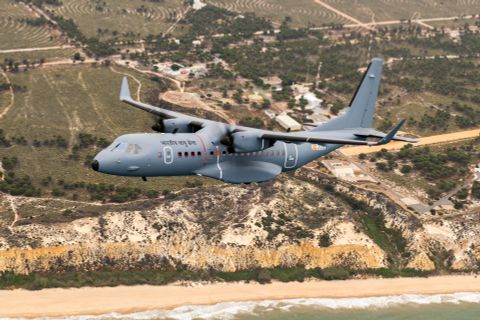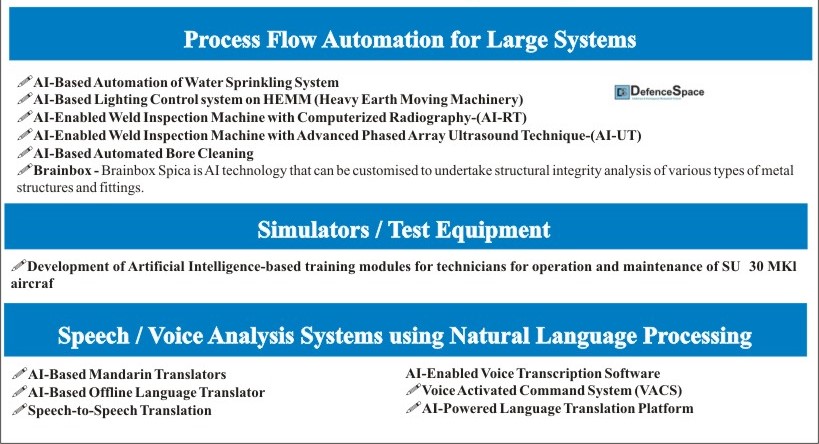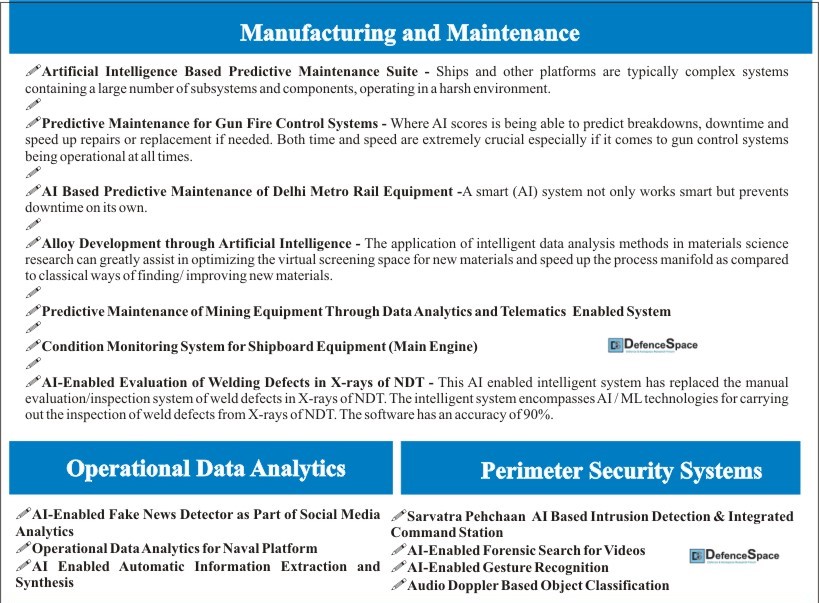
BY RITIKA BEHAL
Drones or Unnamed Aerial Vehicles (UAVs) will be the major force multipliers in the future battles, as they are not only precise in striking but are also economical to develop and maintain as compared to most of the other conventional war fighting machines. In recent years, the capabilities of Unmanned Vehicles have been employed over a larger spectrum of Combat and Civil/Commercial domain which in turn has driven and revolutionized the UAV market globally including that of India.
The ongoing Russia-Ukraine war as well as the earlier Azerbaijan-Armenia war have highlighted one important aspect – the pivotal role played by Drones or Unmanned Aerial Vehicles (UAVs) for both attack and reconnaissance purposes. Undeniably, these have the capability to change the dimensions of conflicts once dominated by ground battles and traditional air power. Irrefutably, Drones are becoming increasingly popular these days, with the use and requirement of these seeing a steady rise.
In technical terms, a drone, or Unmanned Aerial Vehicles (UAVs) is basically referred to as an unmanned aircraft or a type of flying robot that can be operated remotely or anonymously using software-controlled flight operations in their embedded systems, which operate in conjunction with GPS and onboard sensors.
Since conventional methods are most of the times are seen to be and cost and time-intensive, and moreover susceptible to human error, so utilising drones in their place can indeed result in considerable time saving and mass adoption while enhancing the value of information obtained. Owing to these advantages several countries including India realigning their strategies with emphasis on UAVs or drones for both military as well as commercial sector.
However, the use of drones is no longer limited to the military sector. Nowadays, drones are being widely used in for commercial / civil applications such as surveillance, Disaster Management, crop protection, construction project surveying, filmmaking, healthcare, e-commerce delivery, and more by countries across the world. Some of the applications in various sectors where drones are being used are shown in the diagram below.

Source: Open Sources & Compiled by thedefencespace DS
The Growing Requirement of Military Drones
Since the last few decades, Drones have been primarily used for patrolling and reconnaissance purpose by countries across the world. As per the Arms Transfers database released in 2021 by ‘Stockholm International Peace Research Institute’s (SIPRI)’, an estimated 2,892 orders for UAVs have been recorded with the supplier countries since the 1980’s, of which over 2,600 transfers or deliveries have taken place.
And, out of the estimated 2,612 UAVs delivered to countries, 11% are armed UAVs while others are mostly surveillance and reconnaissance drones. Currently, Israel is the largest supplier of UAVs in the world, having transferred 810 UAVs ending 2021, followed by the United States, Canada, China, and Austria. Refer Fig.

Source: SIPRI and Moneycontrol & Compiled by thedefencespace DS
The growing use of drones in the defence and security industry for several applications such as surveying, reconnaissance, combat, mapping and trasportation is expected to propel the demand for military UAVs. However, what is worth noticing is the fact that in the coming years things are likely to swiftly change in favour of armed / weaponized or combat drones as owing to the various advantages that these come with including of strike precision without much collateral damage, reusability, and cost effectiveness when it comes to developing and maintaining them as compared to most of the other conventional war fighting machines.
Basically, an armed drone or Unmanned Combat Aerial Vehicle (UCAV) is an UAV that usually carries combat payloads, like Ammunition and missiles and used for stike purpose. At present, over three-dozen countries in the World have armed or weaponized drones in their inventory, with more and more countries eagerly looking forward to either manufacturing or importing of these in coming years.
It would not be wrong to say that UAVs will be the major force multipliers in the future wars for real-time surveillance as well as hitting high-value enemy targets. As per the data from Statista, the US is forecast to buy 1,000 of them up to 2028, far ahead of China’s 68 and Russia’s 48. Refer Fig.

Source: Statista & Compiled by thedefencespace DS
Worth mentioning, a weaponized UAV platform offers the same capability as the guided missile of Brilliant Anti-Tank (BAT) weapon system, which had a series of small, unpowered glide-bomb sub-munitions that could be released from a guided-missile platform originally fired from a plane to destroy tanks. However, the armed UAVs offer distinctive advantages of size, operator safety and cost in comparison to these munitions and also over conventional manned aircraft or long-range cruise missiles; thus, allowing it to undertake operations in higher risk airspace. Moreover, assuming safe return of the UAV platform, remote strike offers a cheaper alternative to the cruise missile variant, as similar effect can be achieved through the use of smaller, more affordable weapons and also successful in neutralizing the designated targets.
Further, another technology, namely, swarm/fleet of Drones or Unmanned Aerial Vehicles (UAVs) is also catching up fast amongst militaries worldwide and has the potential to revolutionize the dynamics of aerial warfare. Moreover, these can be armed as well and can cause massive destruction in times of conflict. Basically, a swarm/fleet of Drones or Unmanned Aerial Vehicles (UAVs) is a set of aerial robots that work collectively and autonomously make decisions to realize a specific goal based on shared information. These are capable enough of working together to overpower any kind of adversaries Noteworthy, every UAV/Drone in a swarm is determined by a definite number of rotors and has the capability to Vertically Hover, Take-Off, and Land (VTOL). Many countries like US, China and Russia have been able to successfully develop these.
As per a report by Research and Markets, the military drone / UAV market is projected to grow from USD 12.0 billion in 2022 to USD 17.0 billion by 2027, at a CAGR of 7.3% from 2022 to 2027. Based on platform, the military drone market has been segmented into small, tactical, and strategic drones. The tactical segment is expected to witness strong growth in the market during the forecast period.

Source: www.researchandmarkets.com
Some of the prominent players in the military drone market are Elbit Systems, Lockheed Martin, Northrop Grumman, Boeing, AeroVironment, General Atomics, Textron, Israel Aerospace Industries, Thales, to name a few. Besides, Asia-Pacific will continue to be the largest region in military drone market in the coming years as well.
This is the PART-I of the BLOG on ‘Drones – Force Multiplier in Combat and Commercial Applications’
Stay Tuned for PART-II of this BLOG wherein we will be covering ‘Indian Military Drone Market’ –
- Current Inventory With Indian Armed Forces
- Market Size
- Forecast Demand Of Armed Forces
- Latest Tenders Issued in recent years





One thought on “Drones – Force Multiplier in Combat and Commercial Applications ”
Comments are closed.